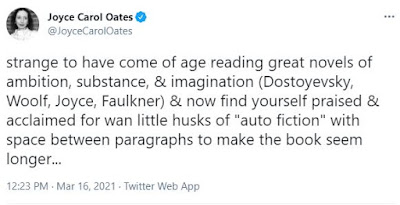 |
| www.karissalaurel.com |
One of my side-gigs is being a co-assistant editor at Cast of Wonders. A lot of what I do in that role is reading submissions and making decisions with my co-assistant editor and senior editor about which stories we'll accept for publication and audio-production. We're open to receiving stories from authors of all backgrounds, and we've made a point of trying to produce more stories that show the diversity of the authors who submit to us. Sometimes that requires opening our minds to stories that are not written in formats that are familiar to us as primarily Western and/or white readers. Sometimes we fail, despite our best intentions.
Recently my co-assistant editor, a member of the AAPI community and a talented writer himself, brought this shortcoming to our attention. Primarily his point was that often our comments as slush readers reveal our biases against non-Western structures and elements in ways we aren't aware of. He linked to great thread on Twitter by Suyi Davies Okungbowa to demonstrate and exemplify ways this bias appears in our editorial language and what it indicates: https://twitter.com/IAmSuyiDavies/status/1371175193159200769
In unpacking how dominant methods of writing & storytelling are learned + readers/viewers trained to expect, I've discovered a number of things often framed as critique are actually statements of non-recognition.
— Suyi Davies Okungbowa ⚡Preorder SON OF THE STORM!⚡ (@IAmSuyiDavies) March 14, 2021
"I couldn't connect to this character" is one of such.
Which is why "I couldn't connect to this character" is not actually a statement of how the character is presented by the author. It's a statement of non-recognition by the reader, borne of their expectations.
— Suyi Davies Okungbowa ⚡Preorder SON OF THE STORM!⚡ (@IAmSuyiDavies) March 14, 2021
And from an authorial perspective, that is actually not a problem.
It's no surprise, for instance, that work from BIPOC authors and/or featuring BIPOC characters gets this commentary often. It's easy for for to reviewer to say they couldn't connect because a character is "written poorly," but the real question is: "Poorly" by whose definition?
— Suyi Davies Okungbowa ⚡Preorder SON OF THE STORM!⚡ (@IAmSuyiDavies) March 14, 2021
Character, in particular, exists to serve a purpose. It's why the tortoise in fables has 2 traits only: slow, yet wise/cunning. We don't expect more out of the tortoise because we recognize that purpose.
— Suyi Davies Okungbowa ⚡Preorder SON OF THE STORM!⚡ (@IAmSuyiDavies) March 14, 2021
"I did not connect" really means, "I did not recognize the purpose."
"Criticizing work for what it isn't, rather than what it is" sums this up better than I ever could, so I'm gonna append this tweet here.https://t.co/zFMvHqbaGE
— Suyi Davies Okungbowa ⚡Preorder SON OF THE STORM!⚡ (@IAmSuyiDavies) March 14, 2021
The point of this post isn't to accuse anyone of racism. Rather, it's to remind myself and readers like me that we can and should question our biases. We can be more critical of our responses to media that include unfamiliar themes, settings, and cultures. It's also my attempt to challenge us to stretch our analytical muscles, to broaden our minds by purposefully broadening our media selections.
Maybe learning how to be receptive to non-Western story structures will take some practice. Maybe we'll have to use Google to help us understand, to look up the meaning or translation or location of something. I promise it won't hurt, and it might actually do us some good.
Here are some places where we can start--stories that I (and some helpful friends) enjoyed and challenged me to think a bit outside of my white/Western comfort zone:

No comments:
Post a Comment